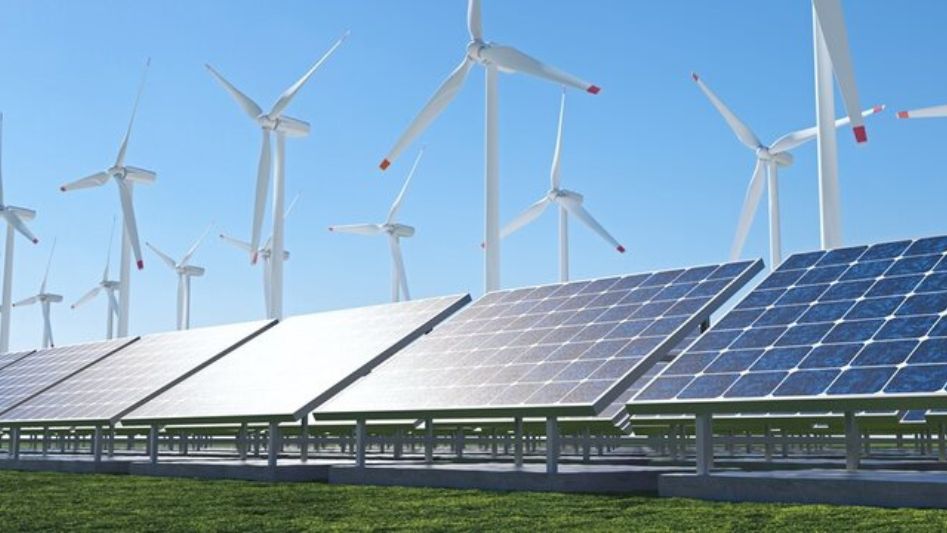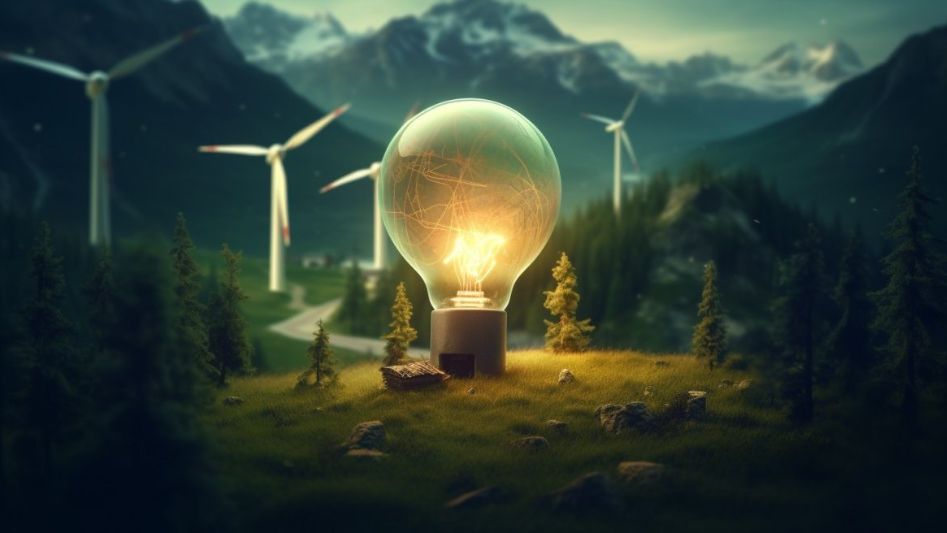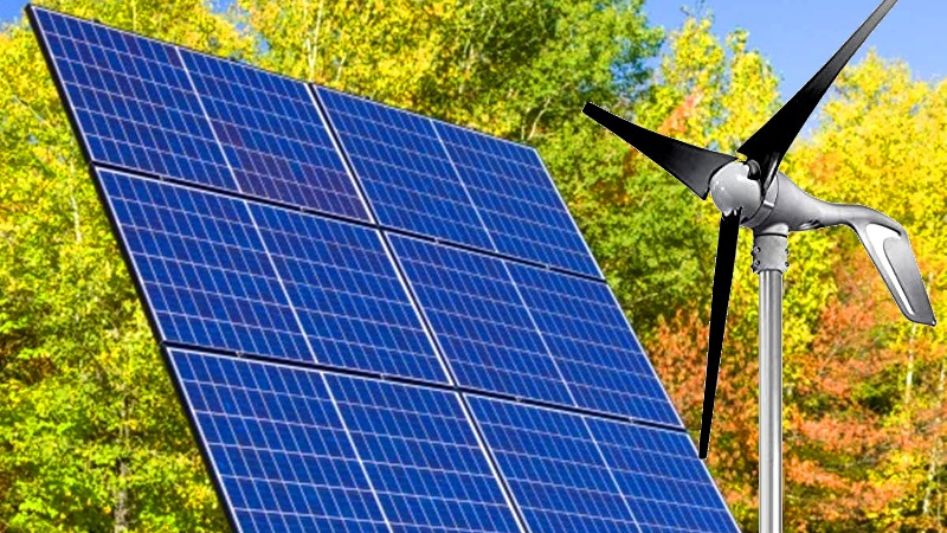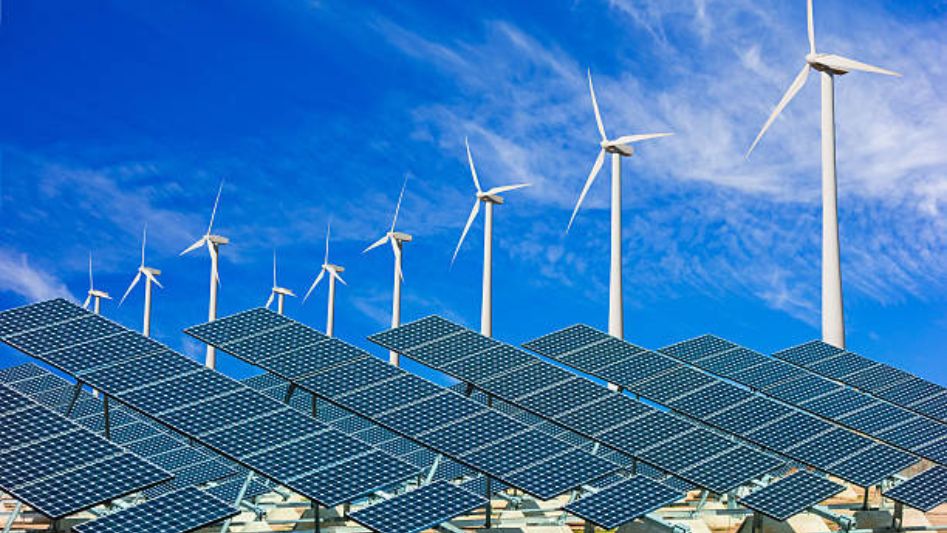The demand for clean and renewable energy sources has been increasing rapidly in recent years. As concerns about climate change and environmental sustainability grow, people are looking for alternative energy options to reduce their carbon footprint. Solar panels and wind turbines have emerged as two of the most popular and efficient sources of green energy. In this article, we will explore how these technologies harness the power of nature and contribute to a greener future.
Table Of Content
We invite you to read: “6 Steps for DIY Solar Panels: Installation Guide”

Harnessing the Sun’s Energy with Solar Panels
Solar panels, also known as photovoltaic (PV) panels, are devices that convert sunlight into electricity. They are made up of multiple solar cells, which are typically made from silicon. When sunlight strikes these cells, it creates an electric field that generates a flow of electrons, thus producing an electric current.
How Do Solar Panels Work?
Solar panels work on the principle of the photovoltaic effect. When photons (particles of light) hit the solar cells, they transfer their energy to the electrons in the atoms of the semiconductor material, usually silicon. This energy allows the electrons to break free from their atoms and flow through the material, creating an electric current.
Advantages of Solar Panels
Solar panels offer several advantages as a source of renewable energy:
- Reduced Carbon Footprint: Solar panels produce clean electricity without emitting greenhouse gases, thereby reducing carbon emissions and combatting climate change.
- Energy Independence: By harnessing the power of the sun, solar panels allow individuals and communities to become more self-sufficient in meeting their energy needs.
- Long Lifespan: Solar panels have a long lifespan, typically lasting 25 to 30 years or more. This makes them a reliable investment for homeowners and businesses.
- Low Maintenance: Solar panels require minimal maintenance, with occasional cleaning and inspections being the primary tasks.
Challenges of Solar Panels
While solar panels offer numerous benefits, there are some challenges to consider:
- Weather Dependence: Solar panels depend on sunlight to generate electricity, which means their efficiency is affected by weather conditions. Cloudy days or shading can reduce the amount of energy produced.
- High Initial Costs: The upfront cost of installing solar panels can be relatively high. However, the long-term savings on electricity bills and potential government incentives can offset this initial investment.
We invite you to read: “What Are The Best Solar Panels If You Don’t Have Roof Space”

Tapping into the Power of Wind with Wind Turbines
Wind turbines are large structures with rotating blades that harness the kinetic energy of the wind to generate electricity. As the wind blows, it causes the blades to rotate, which drives a generator and produces electrical energy.
How Do Wind Turbines Work?
Wind turbines work on the principle of aerodynamics. The wind’s force turns the blades of the turbine, and the motion is transferred to a rotor inside the turbine. The rotor is connected to a main shaft, which spins a generator to produce electricity.
Advantages of Wind Turbines
Wind turbines have several advantages as a renewable energy source:
- Abundant Energy Source: Wind is an abundant and widely available resource, making wind turbines a reliable source of electricity in many regions.
- Zero Emissions: Wind turbines produce electricity without emitting greenhouse gases or other harmful pollutants, making them a clean and environmentally friendly energy option.
- Scalable and Modular: Wind farms can be built with multiple turbines, allowing for scalability and modular growth to meet increasing energy demands.
Challenges of Wind Turbines
There are also some challenges associated with wind turbines:
- Visual and Noise Impact: Wind turbines can be visually imposing and generate noise, which can be a concern for communities near wind farms. Proper planning and placement are necessary to address these issues.
- Intermittency: Wind energy is intermittent and depends on wind availability. This variability requires integrating wind power with other energy sources or energy storage systems to ensure a consistent electricity supply.
We invite you to read: “A Green Alliance: Carbon Neutrality’s Co-benefits for Solar and Wind Energy”

Conclusion
From sunlight to wind, the green energy duo of solar panels and wind turbines offers immense potential in transitioning to a sustainable and environmentally friendly future. Solar panels harness the power of the sun, while wind turbines tap into the kinetic energy of the wind, both providing clean and renewable sources of electricity. By combining these technologies and exploring their advantages and challenges, we can pave the way for a greener world.
FAQs
How much electricity can solar panels generate?
The amount of electricity generated by solar panels depends on factors such as the panel’s efficiency, the amount of sunlight received, and the panel’s size. On average, a well-designed solar panel system can generate enough electricity to meet a significant portion of a household’s energy needs.
Are solar panels suitable for all climates?
Solar panels can be used in various climates, although their efficiency may vary. While solar panels work best in direct sunlight, advancements in technology have improved their performance in cloudy or low-light conditions as well.
How much space is required to install wind turbines?
The space required for wind turbines depends on their size and the specific wind conditions in a given area. Generally, wind turbines are installed in open areas with ample wind resources, such as plains, coastal regions, or offshore locations.
Can wind turbines be installed on residential properties?
Wind turbines can be installed on residential properties, but there are considerations to keep in mind. Factors such as local zoning regulations, available wind resources, and space requirements need to be assessed before installing a wind turbine on a residential property.
You May Also Like
- How Machine Learning is Powering up Wind and Solar Energy
- Singapore Explores Hybrid Wind, Solar, Tidal, & Wave Energy System
- How Large Is This Hybrid Solar & Wind Energy Facility In Europe?
- The Integration of Wind Energy with Other Renewable Energy Sources
- Wind Energy and Grid Modernization: A Synergistic Approach

